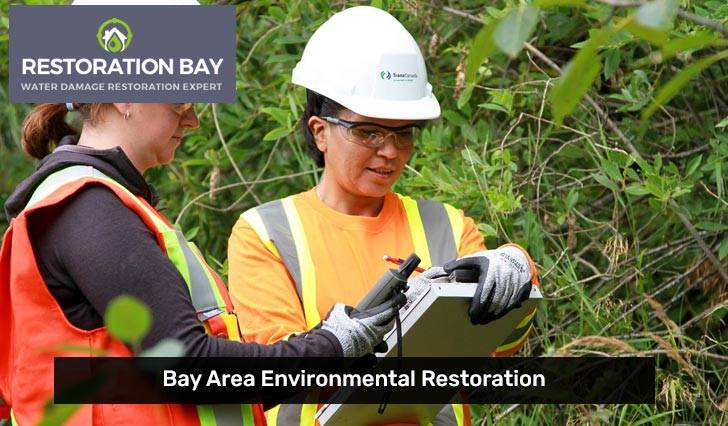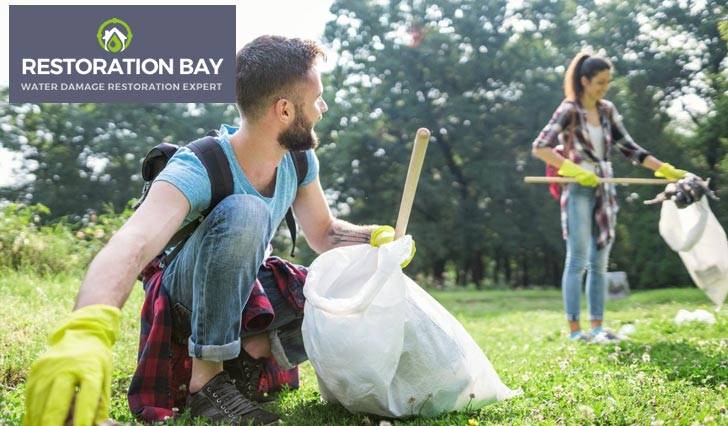- 24/7 Water Damage Emergency
- Direct Insurance Billing
Environmental restoration in the Bay Area homes presents a unique set of challenges that require comprehensive planning and execution. The area’s diverse ecosystem and high population density add complexity to the restoration efforts. Damage from natural disasters such as wildfires and earthquakes, along with pollution from industrial and residential activities, need immediate and effective remediation.
Bay Area environmental restoration faces significant challenges. Pollution, caused by factories and vehicles, harms local ecosystems. As cities grow and expand, they destroy natural homes for plants and animals, leading to the loss of plants and animals. Climate change makes these problems worse, causing the sea to rise and making weather more extreme, which makes it even harder to fix these problems.
Here, we explore the significant challenges that hinder environmental restoration projects and offer insights on how to overcome them.

Environmental restoration is a scientific process dedicated to the rehabilitation and recovery of ecosystems that have been degraded or destroyed due to human activities or natural disasters. This involves a range of actions including, but not limited to, the removal of pollutants, the reintroduction of native species, and the reestablishment of natural processes.
These efforts not only aim to restore the health of the environment, but also to improve the quality of life for the community by providing cleaner air, safer water sources, and more sustainable local economies. As the Bay Area faces critical environmental challenges, the need for strategic and effective restoration projects is more paramount than ever.
The Bay Area’s environmental restoration faces a series of complex and interlinked challenges. These obstacles pose significant threats to the delicate ecosystems of this region and hinder the progress of Bay Area environmental restoration projects. Some of the major challenges include:
Industrial operations and vehicular emissions contribute to air and water pollution. Harmful pollutants such as carbon dioxide, sulfur dioxide, and nitrogen oxides are released into the atmosphere, leading to smog and acid rain. In water bodies, pollutants like heavy metals and chemicals contaminate the water, endangering aquatic life.
Plastic and other non-biodegradable wastes litter the coasts, negatively affecting marine life. Marine animals often mistake plastic debris for food and can suffer from ingestion and entanglement, leading to injuries and death.
Chemical run-off from agriculture contaminates groundwater and local waterways. Pesticides and fertilizers used in farming can seep into the soil and find their way into rivers, lakes, and streams, posing risks to both aquatic life and human health.
Rapid urban expansion and infrastructure development disrupt native habitats. Forests and natural landscapes are often cleared to make way for buildings, roads, and other urban infrastructure, resulting in habitat loss for many plant and animal species.
Construction activities lead to soil erosion and loss of vegetation. The clearing of land for construction projects exposes the soil to erosion by wind and water, causing sedimentation in nearby water bodies and affecting water quality.
Noise and light pollution from urban areas disturb wildlife behavior and migration patterns. Urban areas are often characterized by high levels of noise from traffic, construction, and human activities. Artificial lights can disrupt natural light cycles, affecting the behavior and breeding patterns of nocturnal animals.
Rising temperatures and changing precipitation patterns impact local flora and fauna, disrupting ecosystem balance. As temperatures rise, certain species may struggle to adapt to new climatic conditions, leading to shifts in species distribution and potential extinctions. Changes in precipitation patterns can affect the availability of water resources, affecting both terrestrial and aquatic ecosystems.
Increased incidence of wildfires and extreme weather events cause habitat destruction. Climate change can contribute to drier conditions, increasing the risk of wildfires. Extreme weather events such as hurricanes and floods can result in widespread destruction of habitats and displacement of species.
Sea-level rise due to global warming threatens coastal ecosystems. As global temperatures rise, polar ice caps and glaciers melt, causing sea levels to rise. This poses a significant threat to coastal ecosystems, including coastal wetlands, coral reefs, and mangrove forests, which support diverse marine life.
Non-native plant and animal species introduced to the area compete with native species for resources, causing imbalances in the ecosystem. Invasive species can outcompete native species for food, habitat, and nesting sites, leading to declines in native populations and changes in community structure.
Invasive species can also spread diseases and disrupt food chains. Some invasive species can carry and transmit diseases to native species, causing population declines or extinctions. Additionally, invasive species can disrupt food chains by consuming or outcompeting native prey species, leading to cascading effects throughout the ecosystem.

To overcome these challenges, it’s vital to adopt a holistic, multi-pronged approach. We should minimize pollution by enforcing stricter regulations on industries, promoting greener alternatives, and encouraging responsible waste management. For example, reducing single-use plastic and recycling can mitigate marine pollution.
Sustainable urban development is crucial. Construction projects should incorporate green building practices, and urban planning should prioritize the preservation of natural habitats. Efforts like tree planting and green space creation within cities can contribute to this.
Addressing climate change is imperative. This can be achieved by reducing greenhouse gas emissions through the adoption of renewable energy sources, improving energy efficiency, and promoting sustainable agricultural practices.
Managing invasive species requires careful monitoring, early detection, and rapid response. Public education about the threats posed by invasive species can also be beneficial.
Together, these actions can greatly enhance the effectiveness of Bay Area environmental restoration projects, leading to a healthier and more sustainable environment for all. Restoration Bay is in a good position to tackle these challenges by using its knowledge and resources to support environmental restoration efforts.
The journey toward environmental restoration in the Bay Area is fraught with challenges, yet these obstacles can be transformed into opportunities for innovation, collaboration, and sustainability. As individuals and communities, we must recognize our role and responsibility in mitigating these challenges.
By adopting greener practices, supporting sustainable development, and educating ourselves about the impact of our actions on the environment, we can contribute significantly to local environmental restoration efforts. Let’s take action today and pledge to make a positive difference for the Bay Area environment.